| Listing 1 - 10 of 48 | << page >> |
Sort by
|
Book
ISBN: 0125045824 1322053340 1483276759 Year: 1985 Publisher: London Academic press
Abstract | Keywords | Export | Availability | Bookmark
 Loading...
Loading...Choose an application
- Reference Manager
- EndNote
- RefWorks (Direct export to RefWorks)
Book
ISBN: 0131008358 Year: 1988 Publisher: New York (N.Y.) Prentice Hall
Abstract | Keywords | Export | Availability | Bookmark
 Loading...
Loading...Choose an application
- Reference Manager
- EndNote
- RefWorks (Direct export to RefWorks)
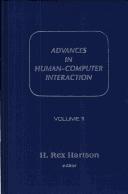
ISBN: 0893912441 9780893912444 Year: 1985 Publisher: Norwood Ablex
Abstract | Keywords | Export | Availability | Bookmark
 Loading...
Loading...Choose an application
- Reference Manager
- EndNote
- RefWorks (Direct export to RefWorks)
Book
ISBN: 0897911490 Year: 1985 Publisher: New York (N.Y.): Association for computing machinery
Abstract | Keywords | Export | Availability | Bookmark
 Loading...
Loading...Choose an application
- Reference Manager
- EndNote
- RefWorks (Direct export to RefWorks)
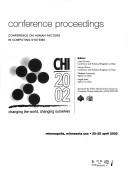
ISBN: 1581134533 Year: 2002 Publisher: New York (N.Y.) ACM
Abstract | Keywords | Export | Availability | Bookmark
 Loading...
Loading...Choose an application
- Reference Manager
- EndNote
- RefWorks (Direct export to RefWorks)
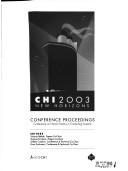
ISBN: 1581136307 Year: 2003 Publisher: New York (N.Y.) ACM
Abstract | Keywords | Export | Availability | Bookmark
 Loading...
Loading...Choose an application
- Reference Manager
- EndNote
- RefWorks (Direct export to RefWorks)
Annual CHI conference is the leading international forum for the exchange of ideas and information about computer-human interaction (CHI), also known as human-computer interaction (HCI).
Human-computer interaction --- User interfaces (Computer systems) --- 681.3*H12 --- 681.3*H12 User/machine systems: human factors; human information processing --- User/machine systems: human factors; human information processing --- Information Technology --- Computer Science (Hardware & Networks)
Dissertation
ISBN: 9056826832 Year: 2006 Publisher: Leuven Katholieke Universiteit Leuven
Abstract | Keywords | Export | Availability | Bookmark
 Loading...
Loading...Choose an application
- Reference Manager
- EndNote
- RefWorks (Direct export to RefWorks)
A telesurgical robot system with an appropriate human machine interface can provide surgeon to achieve stability, accuracy and dexterity during Minimally Invasive Surgery (MIS). In CO2 laser laparoscopic surgery, which is mostly performed to ablate the superficial tissues, the surgeon manipulates the laparoscope through a small incision, and control the laser ablation by levering on the trocar position. The skills to perform this surgery are categorized on an advanced level to be performed only from a senior surgeon who received specific training and obtained the knowledge in both the procedures and the instrumentations. However, the performance is still constrained by the existing limitations of this specific surgical technical skill. This work investigated the limitations of the surgical technical skills and concluded that the following items are prohibiting wider application of the procedure: 'stability, precision, calculation, speed, focus, adaptation, tiredness and training'. Therefore, a telesurgical robot system is proposed to tackle the 'stability, precision, calculation, speed, tiredness and training' problems by implementing a What-You-Draw-Is-What-You-Cut (WYDIWYC) Intuitive Writing Interface (IWI) and a suitable real-time master-slave controller onto the system. The integrated system has demonstrated excellent accuracy of writing 4mm characters on an apple. In addition, the system was compared with the manual manipulation in CO2 laser laparoscopic surgery. The statistical results revealed the applied system has provided the user to obtain more precision, combined with a shorter completion time. A self-defined Index of Time and Error represented the learning effects of the user and has showed the consistent learning behavior compared to its manual counterpart. Secondly, an Operative Laparoscopic Distance Sensor (OLDS) was developed to measure the focusing distance from the lens to the objects by the aid of image processing techniques. Incorporating it on the laparoscopic robot allows measuring the 3D contour of a distant object. The Auto Focus Function (AFF) takes advantage of the OLDS to control the focusing distance. The Direct Writing Interface (DWI) telesurgical robot system with What-You-Trace-Is-What-You-Cut (WYTIWYC) control allows the user to perform the laser ablation directly on the laparoscope image shown on the LCD screen. The OLDS, AFF and DWI further deal with the unsolved skill limitations in 'focus and adaptation'. This work has identified the limitations of surgical procedure in CO2 laser laparoscopic surgery. The developed telesurgical system with both writing interfaces has successfully provided the engineering solutions to these problems and has proved better precision, stability and dexterity. In the future, based on the results and the potential of this development, it is possible to build a more intelligent system that can perform semi automatic laser ablation functions and eventually, the idea can be used in any laser ablation procedure in medicine. This dissertation describes the development of a telesurgical robot system with intuitive and direct writing interfaces for CO2 laser laparoscopic surgery. It begins with the explanation of the setup, techniques and instrumentation of the operation and an overview of laparoscopic holding robot. The limitations of the surgical skill in this operation has been summarized to 'stability, precision, calculation, speed, focus, adaptation, tiredness and training'. The intention is to synergize the surgeon's surgical knowledge and the machine's competences in order to improve the overall surgical performances. Thus, handwriting is proposed to be the optimal interaction dialogue in man-machine interface.The telesurgical robot system has been successfully constructed with two different man-machine interfaces. An Intuitive Writing Interface (IWI) manipulates the laser ablation by What-You-Draw-Is-What-You-Cut (WYDIWYC) control. It has demonstrated the feasibility and excellent accuracy. The Index of Time and Error (ITE) represents the surgical performance and approves the significant benefits of the developed system. An Operative Laparoscopic Distance Sensor (OLDS) is developed to measure the depth information, which enables the functionality of Auto Focus Function (AFF). The Direct Writing Interface (DWI) telesurgical robot system with What-You-Trace-Is-What-You-Cut (WYTIWYC) control allows the user to perform the laser ablation directly on the laparoscope image shown on the LCD screen.
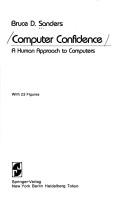
ISBN: 0387909176 1461382572 Year: 1984 Publisher: New York (N.Y.): Springer
Abstract | Keywords | Export | Availability | Bookmark
 Loading...
Loading...Choose an application
- Reference Manager
- EndNote
- RefWorks (Direct export to RefWorks)
681.3*K65 --- Electronic data processing --- -Electronic data processing --- -681.3*H12 --- 681.3*K1 --- 681.3*K41 --- ADP (Data processing) --- Automatic data processing --- Data processing --- EDP (Data processing) --- IDP (Data processing) --- Integrated data processing --- Computers --- Office practice --- Computerwetenschap--?*K65 --- Management --- Psychological aspects --- User/machine systems: human factors; human information processing --- Computer industry: markets; standards; statistics; suppliers --- Computerwetenschap--?*K41 --- Automation --- 681.3*K1 Computer industry: markets; standards; statistics; suppliers --- 681.3*H12 User/machine systems: human factors; human information processing --- 681.3*H12
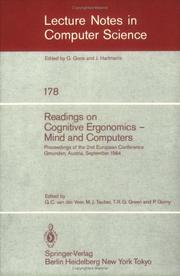
ISBN: 3540133941 Year: 1984 Publisher: Berlin Springer
Abstract | Keywords | Export | Availability | Bookmark
 Loading...
Loading...Choose an application
- Reference Manager
- EndNote
- RefWorks (Direct export to RefWorks)
Artificial intelligence. Robotics. Simulation. Graphics --- 681.3*H12 --- 681.3*K6m --- User/machine systems: human factors; human information processing --- Insurance; security (Management of computing and information systems) --- 681.3*K6m Insurance; security (Management of computing and information systems) --- 681.3*H12 User/machine systems: human factors; human information processing
Book
ISBN: 0231037929 9780231037921 Year: 1975 Publisher: New York (N.Y.): Columbia university press
Abstract | Keywords | Export | Availability | Bookmark
 Loading...
Loading...Choose an application
- Reference Manager
- EndNote
- RefWorks (Direct export to RefWorks)
Computer. Automation --- Management information systems --- 681.3*H --- Management information systems. --- 681.3*H12 --- Computer-based information systems --- EIS (Information systems) --- Executive information systems --- MIS (Information systems) --- Sociotechnical systems --- Information resources management --- Management --- Information systems --- User/machine systems: human factors; human information processing --- Communication systems --- 681.3*H12 User/machine systems: human factors; human information processing --- 681.3*H Information systems
| Listing 1 - 10 of 48 | << page >> |
Sort by
|

 Search
Search Feedback
Feedback About
About Help
Help News
News